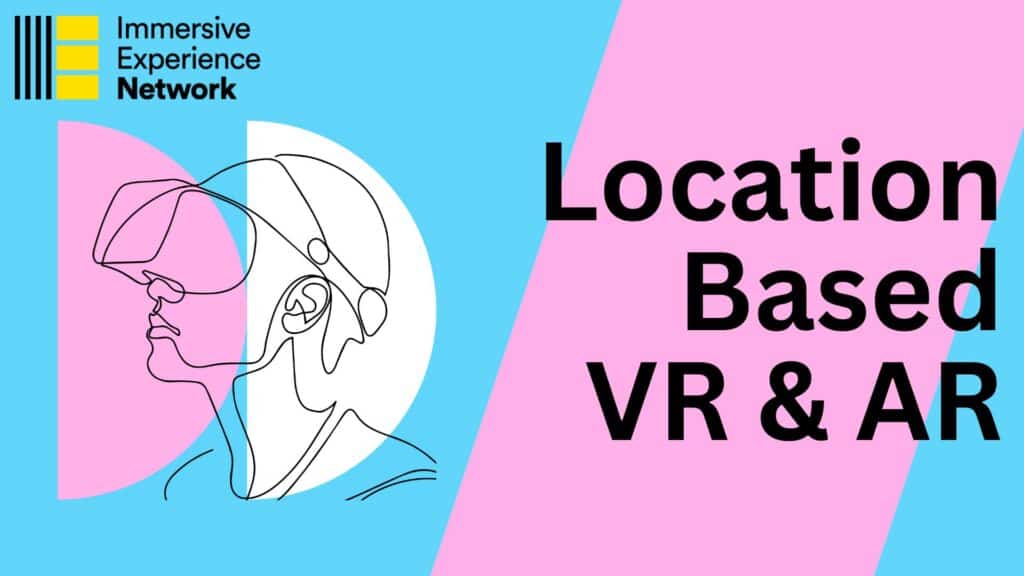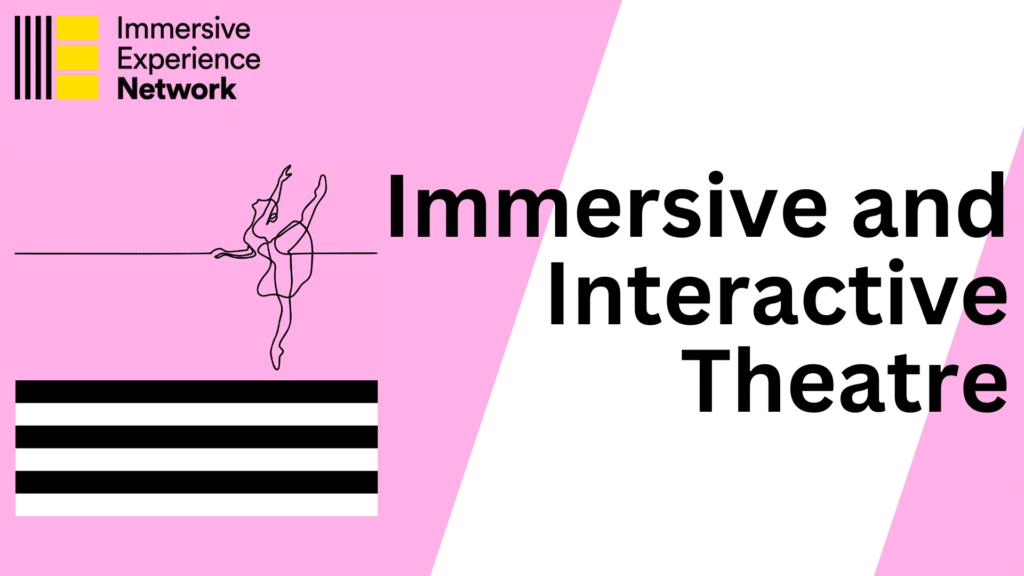What is location-based VR and AR?
Location-Based Virtual Reality (VR) and Augmented Reality (AR) are immersive experiences that combine digital content with the physical world in one way or another.
In the case of location-based VR, this usually means inviting audience members to go to a specific location such as a VR arcade or exhibition space, put on a VR headset, and take part in a solo or multi-user experience.
Location-based AR, however, uses a smartphone or tablet to view the real world through the camera while adding digital elements on the screen over the real world environment. This allows users to interact with virtual objects or information overlaid onto their real-world environment.
Unlike other kinds of VR and AR, location-based experiences are tied to specific physical locations, adding context and relevance to the virtual content.
Where did location-based VR and AR come from?
One of the earliest forms of VR technology was developed by a cinematographer who wanted to make the film watching experience an even more multisensory one. The 1962 Sensorama simulator – described by its creator Morton Heilig as the ‘cinema of the future’ or ‘experience theatre’ – also came with five short films made by the inventor.
Today VR is used for storytelling in arcades, theme park attractions, and exhibitions. It can be found in most UK cities, as well as at film festivals, museums and galleries, and can also form elements of wider immersive theatre shows or escape rooms. These experiences may use specialised equipment and setups to track users’ movements in a defined physical space, allowing for free-roaming VR experiences that are more immersive and engaging.
Steve Zhao, CEO and co-founder of location-based VR company Sandbox VR, told TechCrunch: “As we continue to innovate in the VR industry, we’ll move towards the virtualization of our physical spaces. One day, it’ll be like stepping into a portal where players can embody their persistent virtual avatars”.
Blending digital content with the physical world became more feasible and popular with the widespread adoption of smartphones and advancements in sensor technology. Added to this the increasing accessibility of tools to build these experiences – both in terms of cost and useability – and location-based AR apps have become commonplace for educational and entertainment purposes alike.
What makes location-based VR and AR immersive?
Real-world integration
By overlaying digital images, sounds, or information onto the physical environment, AR technologies create a seamless blend of the real and virtual worlds. Meanwhile, harmonious design of the base location can provide a multisensory experience for location-based VR users by using the familiarity of the real world as a springboard for storytelling which continues into a virtual one.
Contextual relevance
Location-based AR experiences are designed to be contextually relevant to the user’s physical location, making the virtual content more meaningful and engaging. For example, an AR arts trail can guide users around a physical location and overlay real world landmarks with digital creative responses that appear to interact with their environment. For VR experiences, the onboarding and offboarding experience may have theatrical elements that make it contextually relevant.
Physical interaction
Location-based VR often allows for physical interaction with the environment, such as walking around a virtual space that corresponds to a physical area or using hand gestures to interact with virtual objects. This physical interaction further blurs the line between the real and virtual worlds, enhancing the sense of immersion. Some AR experiences also use a phone’s camera to recognise specific physical objects, using them to trigger an in-app response which propels a related narrative.
Enhanced sensory feedback
Location-based VR experiences, in particular, may include enhanced sensory feedback such as haptic vests, wind, heat, or scent machines to simulate physical sensations that correspond to the virtual environment. This multisensory feedback enriches the immersive experience by engaging more of the user’s senses.
How is location-based VR and AR similar to, or different from, other immersive experiences?
While location-based VR and AR share their in-person characteristic with other immersive genres, they can only be accessed with a device – either a smartphone or a VR headset. Location-based VR and AR may also form part of other wider experiences, for example a section of a themed attraction.
Examples of location-based VR and AR
Pokémon GO, launched in 2016, is a notable example that brought location-based AR into mainstream consciousness, using GPS to place virtual creatures in real-world locations for players to find and capture.
The Infinite, by Felix and Paul Studios, invites visitors to put on VR headsets for an individual virtual experience on board the International Space Station while moving around a physical space at the same time as multiple other people.
Otherworld in London brands itself as a ‘luxury virtual reality resort’ where visitors can mingle in a physical space, have a drink, and then opt for solo or multiplayer games or entertainment experiences in VR headsets







